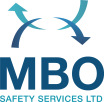Construction
The construction sector is a high risk industry and consequently has a high accident rate reflecting the many different hazards that are present.
From helping you prepare your risk assessments, method statements, construction phase plan to advising on welfare facilities, site traffic management and asbestos or simply providing CDM training for your operatives and managers, we can help you manage building site risks and create a safe workplace for your employees.
We can also help you with Chas, Safe Contractor and Construction–line applications.
CDM Dutyholders
| Summary of duties for CDM Dutyholders | |
| CDM Dutyholders* – Who are they? | Main duties – What they need to do |
| Commercial clients[1] – Organisations or individuals for whom a construction project is carried out that is done as part of a business. | Make suitable arrangements for managing a project, including making sure:
Make sure:
|
| Domestic clients[2] – People who have construction work carried out on their own home (or the home of a family member) that is notdone as part of a business.** | Though in scope of CDM 2015, their client duties are normally transferred to:
However, the domestic client can instead choose to have a written agreement with the principal designer to carry out the client duties. |
| Designers[3] – Organisations or individuals who as part of a business, prepare or modify designs for a building, product or system relating to construction work. | When preparing or modifying designs, eliminate, reduce or control foreseeable risks that may arise during:
Provide information to other members of the project team to help them fulfil their duties. |
| Principal designers[4] – Designers appointed by the client in projects involving more than one contractor. They can be an organisation or an individual with efficient knowledge, experience and ability to carry out the role. | Plan, manage, monitor and coordinate health and safety in the pre-construction phase of a project. This includes:
Prepare and provide relevant information to other dutyholders.Liaise with the principal contractor to help in the planning, management, monitoring and coordination of the construction phase. |
| Principal contractors[5] – Contractors appointed by the client to coordinate the construction phase of a project where it involves more than one contractor. | Plan, manage, monitor and coordinate health and safety in the construction phase of a project. This includes:
Make sure:
|
| Contractors[7] – Those who carry out the actual construction work, contractors can be an individual or a company. | Plan, manage and monitor construction work under their control so it is carried out without risks to health and safety.For projects involving more than one contractor, coordinate their activities with others in the project team – in particular, comply with directions given to them by the principal designer or principal contractor.For single contractor projects, prepare a construction phase plan [8]. |
| Workers[9] – Those working for or under the control of contractors on a construction site. | Workers must:
|
Organisations or individuals can carry out the role of more than one dutyholder, provided they have the skills, knowledge, experience and (if an organisation) the organisational capability necessary to carry out those roles in a way that secures health and safety.
At MBO Safety Services Limited we can assist you to ensure all your duties are fulfilled in a professional manner. CDM 2015 applies if the work is carried out by someone else on the domestic client’s behalf. If the householder carries out the work themselves, it is classed as DIY and CDM 2015 does not apply.
Pictured below are some of the multi million pound construction projects MBO Safety Services Limited has been involved in over years.
